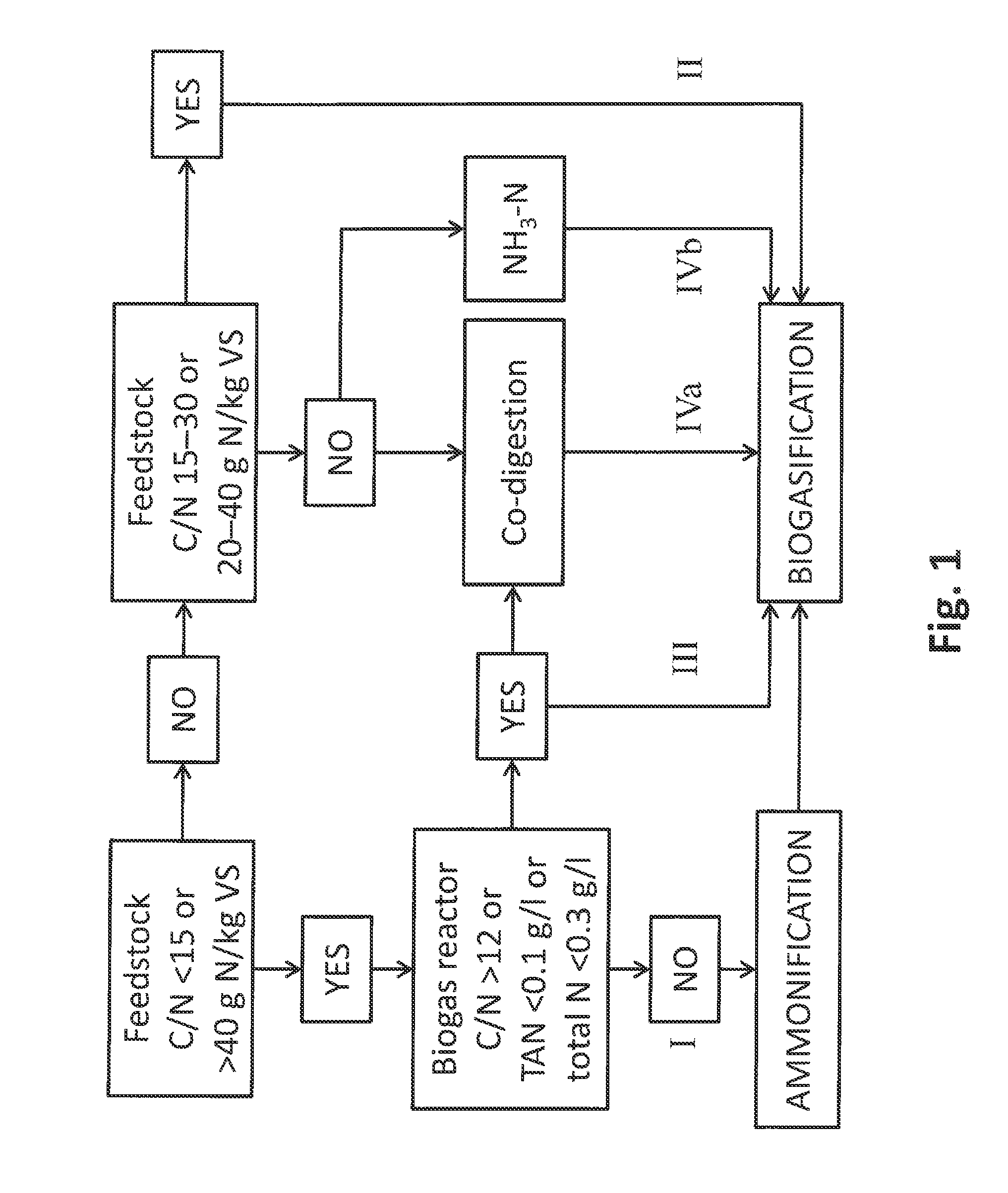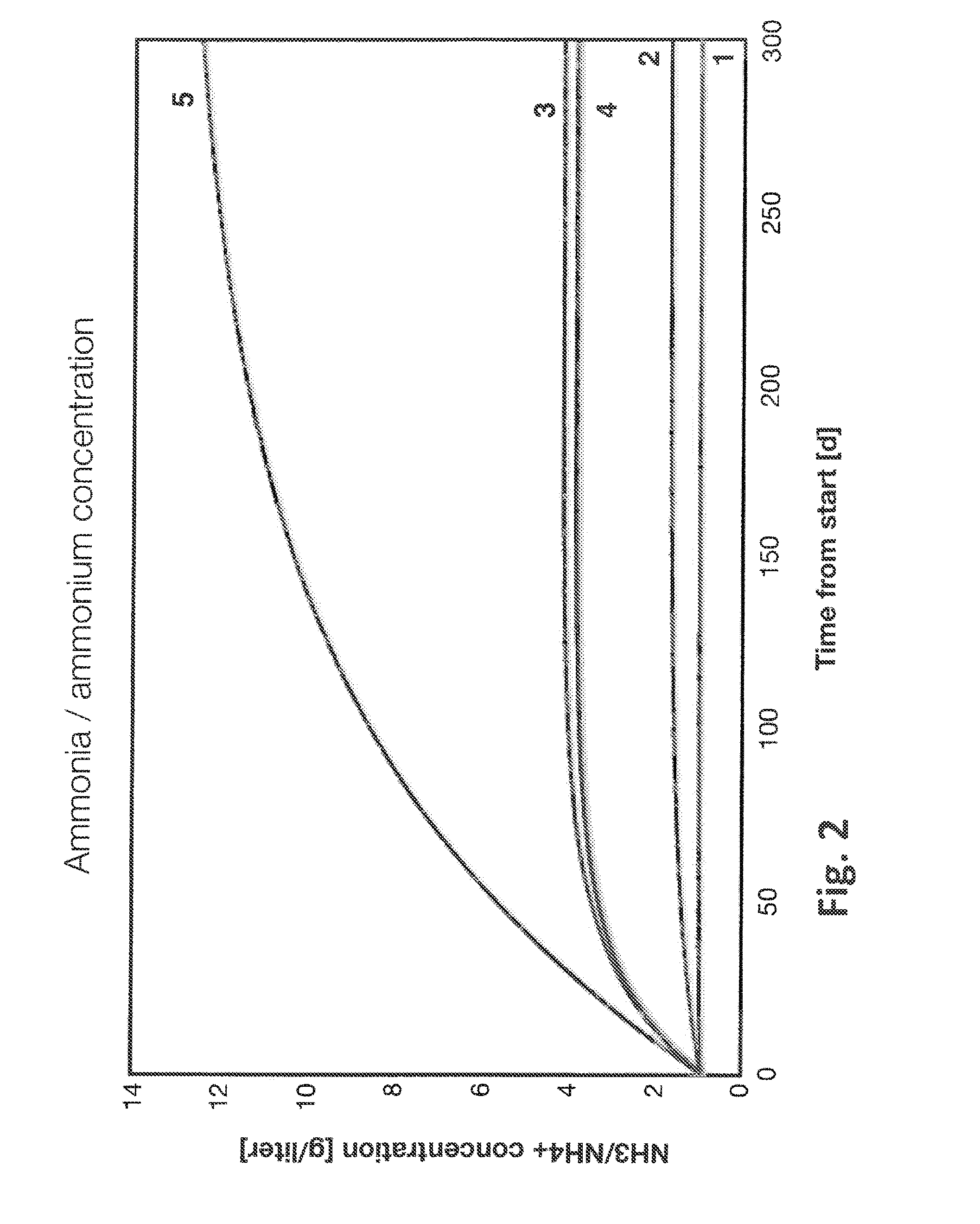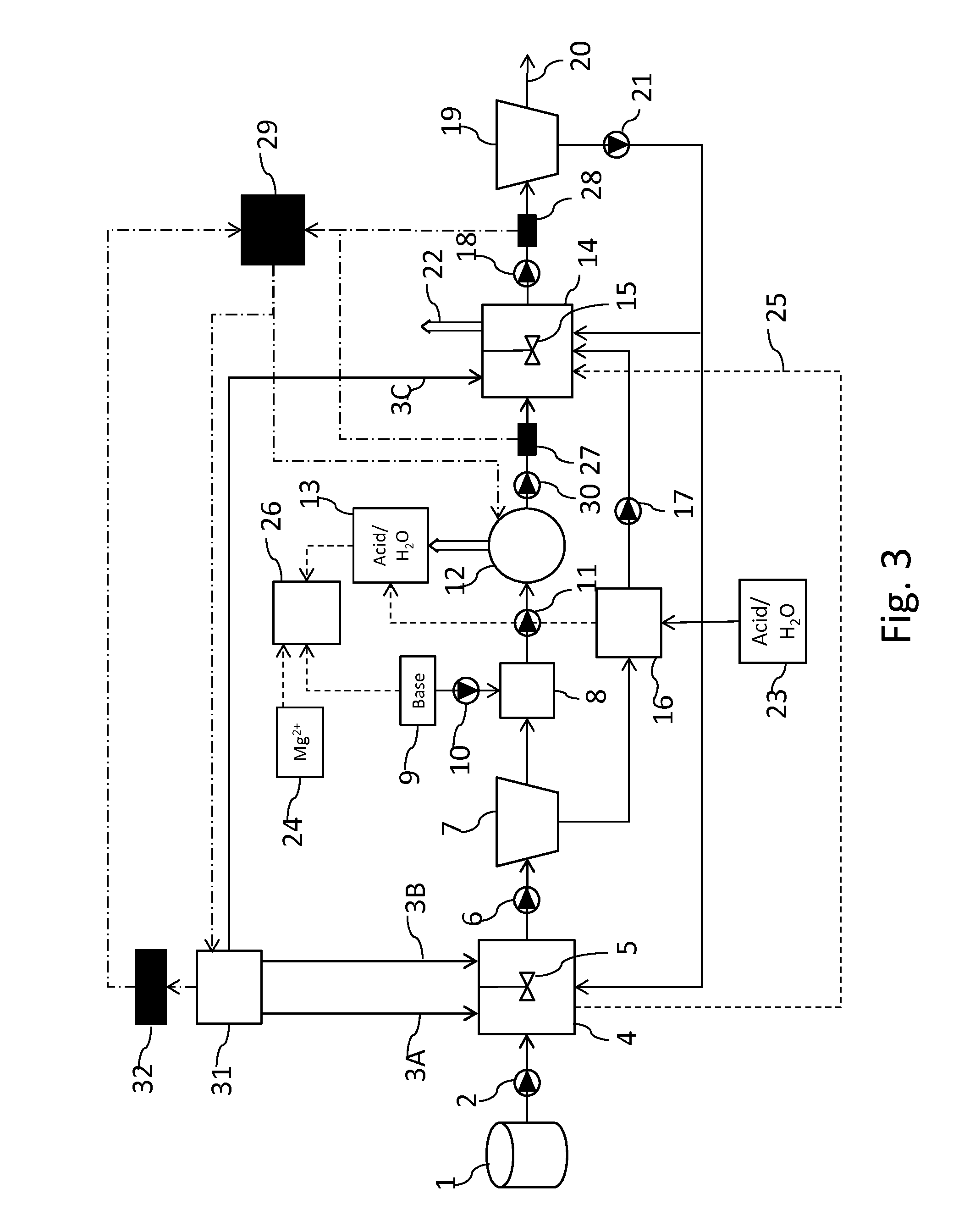Biogas process with nutrient recovery
a biogas and nutrient recovery technology, applied in the field of integrated processes, can solve the problems of reducing the efficiency of its own production and biogas production, reducing the use of acetic acid by acetoclastic methanogens, and subsequent ph decline, so as to achieve the effect of enhancing the yield of biogas
- Summary
- Abstract
- Description
- Claims
- Application Information
AI Technical Summary
Benefits of technology
Problems solved by technology
Method used
Image
Examples
example 1
Preammonification of Acidification-Inducing Feedstock Materials
[0137]The results of an experiment employing food waste (FW), porcine and bovine slaughter by-product (PB) and broiler chicken slaughter by-product (BC) are shown by TABLE 2. Food waste has a C / N molar ratio of approximately 14. It is nitrogen rich, but yet contains enough fermentable carbonaceous compounds to induce acidification and inhibit ammonification when used as a sole feedstock. Animal slaughter by-products have a C / N molar ratio below 10 and contain little carbohydrate. The results show that preammonification of a nitrogen rich material and ensuing ammonification of food waste produces highly improved yields, compared to digestion of food waste as a sole feedstock or in co-digestion with a nitrogen-rich material. Co-digestion gives a less than 20% yield when a PB 40%-FW 60% mix is used. However, when preammonification is applied, as little as 20% of PB is required for a >50% yield. The differences between feeds...
example 2
Modeling Nitrogen Content within the Biogasification Reactor
[0138]In the system of the present invention, feedstock may be sorted based on composition and selectively subjected to nitrogen removal to maintain the nitrogen concentration of a biogasification digester on an optimal level. A computational model was created for modeling the nitrogen concentration of a biogasification reactor of a biogas plant that separates carbon rich and nitrogen rich feedstocks and removes excess nitrogen either by (1) ammonification and subsequent stripping of the nitrogen rich feedstock before biogasification or (2) stripping reject water after biogasification.
[0139]The computational model calculates the nitrogen concentration of the biogasification reactor iteratively based on a set of parameters. For both feedstocks, it uses the following parameters: (1) total elemental nitrogen concentration, (2) total solids ratio, (3) volatile solids ratio and (4) proportion of total feedstock. Additionally, it...
example 3
Nitrogen Removal by Air Stripping
[0147]Ammonia removal by air stripping is dependent on pH level and temperature. Increasing the pH is used for shifting the ammonium / ammonia equilibrium towards the free ammonia form which is easily volatilized. Ammonium ions (NH4+) exist in equilibrium with ammonia (NH3) according to following reaction:
NH3+H2ONH4++OH−
[0148]Elevated temperature and aeration will increase the volatilization further and formed gaseous ammonia can be absorbed in neutral or acidic solution. In this example, an air stripper-acid scrubber column system was used for removal and recovery of ammonia.
[0149]Following the process setup described herein (see the section above in the Detailed Description entitled, “Process Setup” concerning FIG. 3), ammonified and centrifuged chicken litter broth (27.4 liters) was pH adjusted to 10.04 by adding NaOH solution (50%) from container 9. Then pH adjusted chicken litter broth was fed to ammonia removal unit by feed pump. The ammonia remo...
PUM
| Property | Measurement | Unit |
|---|---|---|
| molar ratio | aaaaa | aaaaa |
| molar ratio | aaaaa | aaaaa |
| molar ratio | aaaaa | aaaaa |
Abstract
Description
Claims
Application Information
 Login to View More
Login to View More - R&D
- Intellectual Property
- Life Sciences
- Materials
- Tech Scout
- Unparalleled Data Quality
- Higher Quality Content
- 60% Fewer Hallucinations
Browse by: Latest US Patents, China's latest patents, Technical Efficacy Thesaurus, Application Domain, Technology Topic, Popular Technical Reports.
© 2025 PatSnap. All rights reserved.Legal|Privacy policy|Modern Slavery Act Transparency Statement|Sitemap|About US| Contact US: help@patsnap.com



